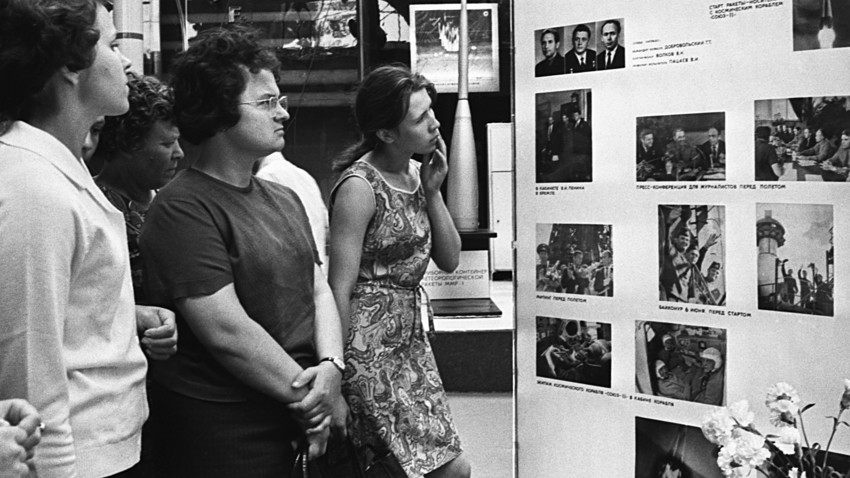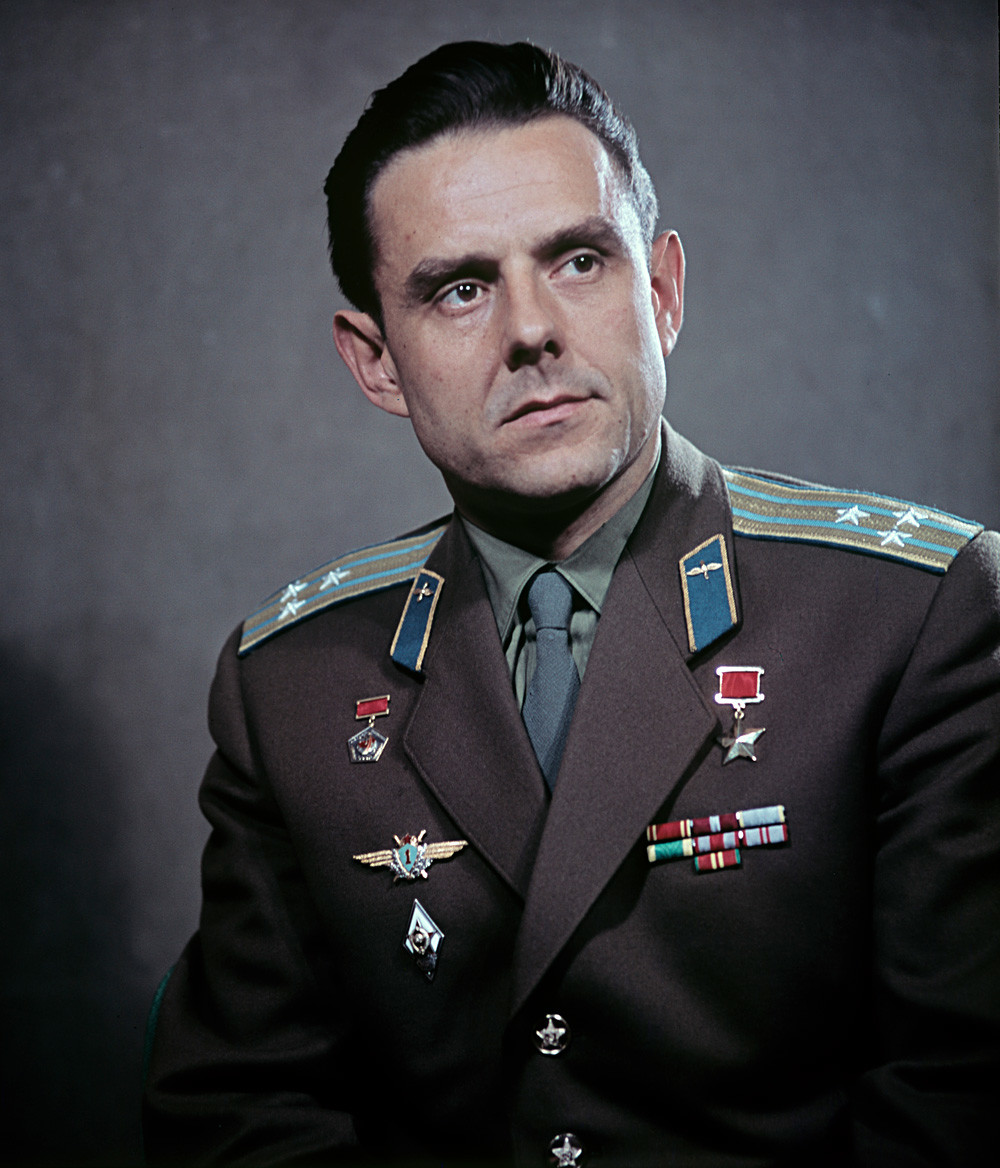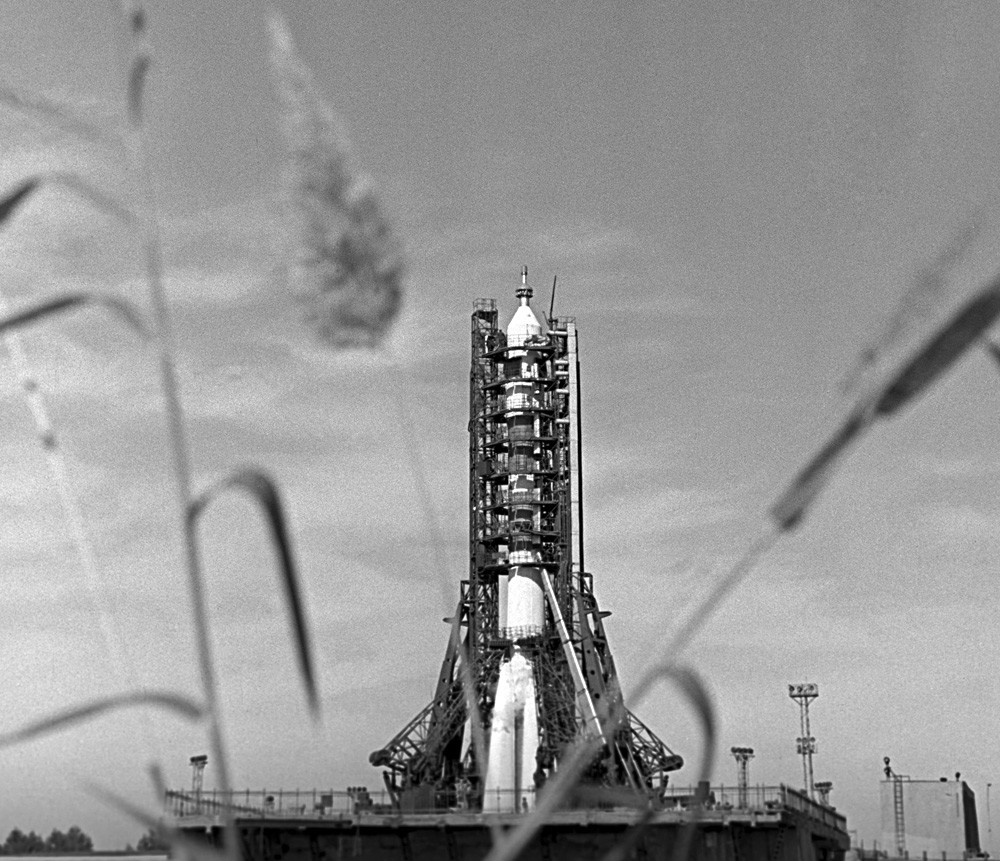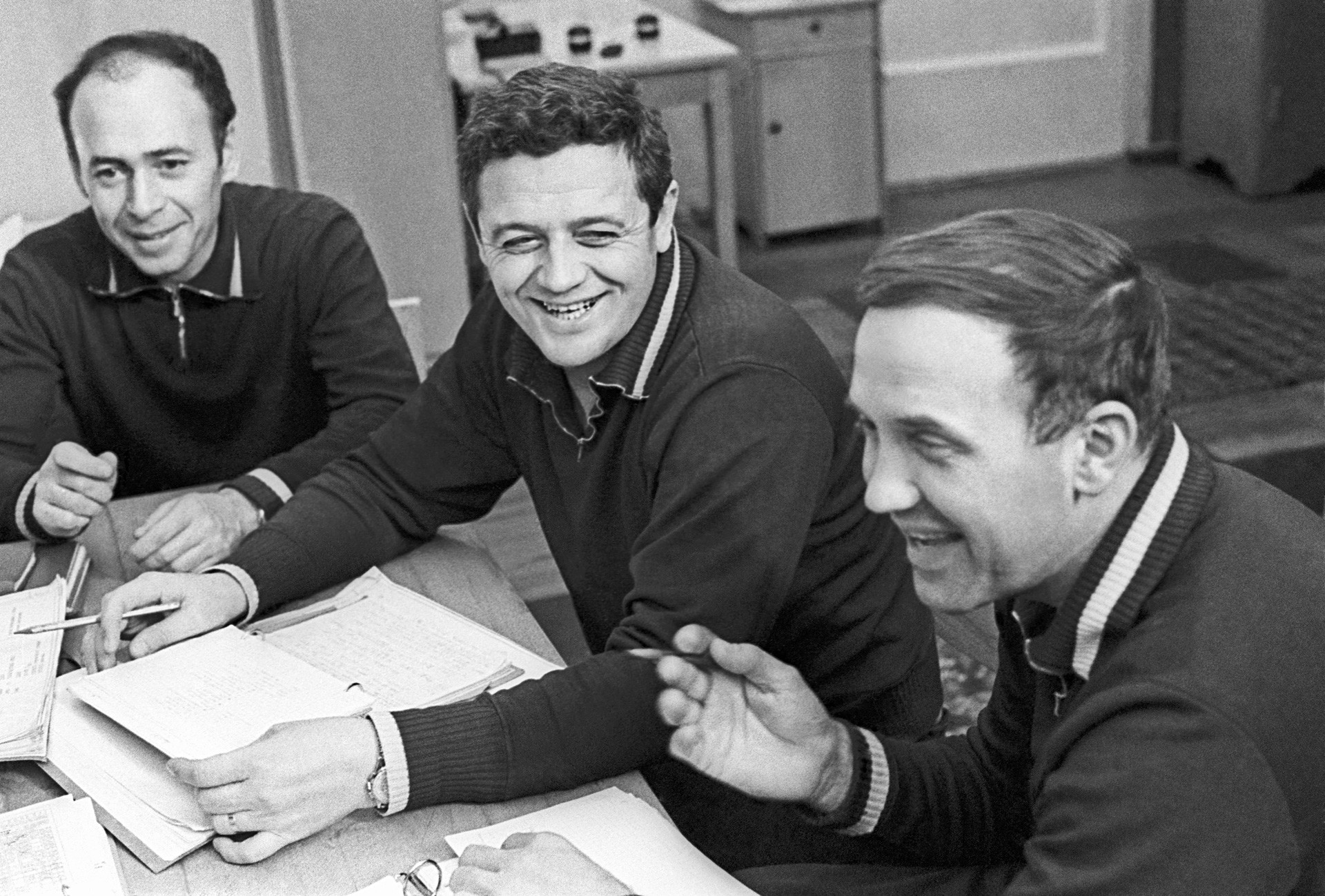
Soviet people read the news about the death of Soyuz 11 crew on July 1, 1971
TASS1. Soyuz
In the early
In this context, Moscow put its hopes in a new spacecraft, Soyuz, which replaced Vostok spaceships that took Yury Gagarin into orbit in 1961. Soyuz was developed as a part of the Soviet program to reach the Moon.

Soviet cosmonaut, Hero of the Soviet Union Vladimir Komarov
Vasily Malyshev/SputnikWhile by 1967 the new spaceship was still not entirely ready, the country’s leadership didn’t want to wait any longer. In April that year, the spacecraft’s first launch was planned, as well as the first-ever space link with another ship, Soyuz 2, which was to be launched soon
Despite the fact that Soyuz 1 was still an untested project, the rocket launch went ahead. Onboard was an experienced cosmonaut, 37-year-old Colonel Vladimir Komarov. When Soyuz reached its orbit, however, problems started. The launch of Soyuz 2 was scrubbed, and Soyuz 1 had to return to Earth.
The navigation system broke down, and Komarov had to steer the craft manually. He managed to start the descent on the correct trajectory, and when everyone thought the worse was over the main parachute that should have slowed the falling capsule did not open. Komarov died due to injuries sustained from
“We discovered Komarov’s body one hour after we started to clear the debris. At first, it was hard to distinguish where was his head, arms
2. Soyuz 11
A second disaster in 1971 took the lives of three Soviet cosmonauts - Georgy Dobrovolsky, Vladislav Volkov

Rocket booster carrying the Soyuz 11 spaceship on its launch pad at the Baikonur Cosmodrome
Nikolai Akimov/TASSAt first, the return of Soyuz 11 went well, and there were no problems with parachutes. However, when the rescue mission located the capsule after landing, there was no response from inside. When rescuers forced open the hatch, “they found all three men … motionless, with dark blue patches on their faces and trails of blood from their noses and ears. … Dobrovolsky was still warm,” recalled Kerim Kerimov, the chair of the State Commission that carried out the investigation of the incident.
The Rescue team did CPR on the cosmonauts, but they were already dead. The autopsy showed that the cause of death was capsule decompression and consequent asphyxiation.
The tragedy was caused by a problem with a breathing ventilation valve that opened in the capsule at the altitude of 168 kilometers. Within seconds the pressure in the descending capsule had been lost. The position of the bodies led investigators to conclude that until the very last moment the men tried to stop the leak of oxygen from the capsule, but didn’t have enough time.

Soyuz 11 spaceship Test Engineer Viktor Patsayev, Flight Engineer Vladislav Volkov, and Crew Commander Georgy Dobrovolsky (L-R) after a training session inside a simulator
Vladimir Musaelyan/TASSDue to the tragedy, it took 27 months to launch the next Soyuz spacecraft, whose design was changed, reducing the crew to two because three people could not fit with space suits on. From then onwards, cosmonauts wore them during re-entry in order not to repeat Soyuz 11’s terrible fate; this would allow them to survive in case of decompression.
3. Tragedy at Plesetsk Cosmodrome
This tragedy had the worse death toll, with scores of people killed by an explosion at the Plesetsk Cosmodrome in northern Russia.
On March 18, 1980, a launch was planned

The monument on the cemetery devoted to the Plesetsk tragedy
Mariya Denisova/FlickrBefore launch, the rocket was checked and no defects found. However, during fueling, a fire broke out and tons of fuel began to burn. Fortunately, the workers at the launch pad managed to remove the fuel trucks from the area,
Officials said 44 people died in the fire, and four
The fire at the Plesetsk launch pad, however, was not the only such incident in the USSR. A similar tragedy occurred at the Baikonur Cosmodrome in 1960. You can read about it here.
If using any of Russia Beyond's content, partly or in full, always provide an active hyperlink to the original material.
Subscribe
to our newsletter!
Get the week's best stories straight to your inbox